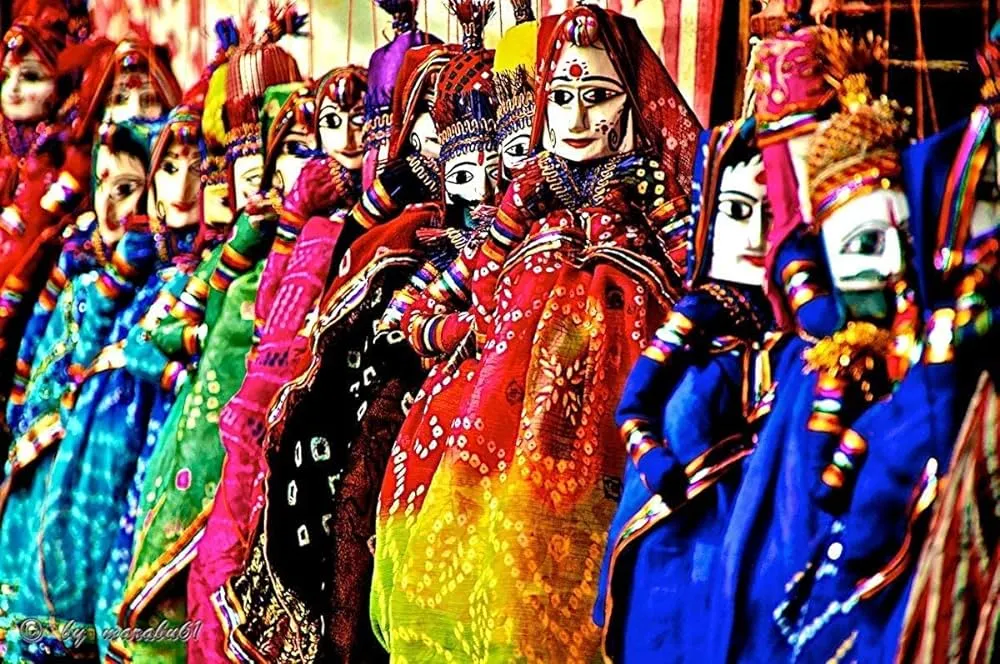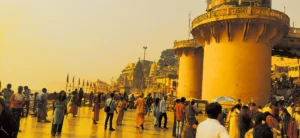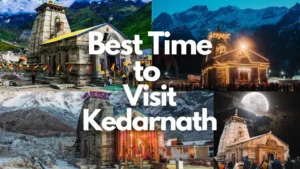Colourful Cultures of Rajasthan
A land where royalty is the way of living. Where colours represent emptions. land where celebrations know no boundaries and usher festivity among everyone. And a land that has endured its diverse range of cultures in the most benevolent ways. Welcome to Rajasthan Culture. The ‘Cultural Capital of India’! One of the most alluring tourist destinations in the world, the ‘Land of Maharajas’ is one such place that showcases. The most exuberant colours and cultures.From the costumes to people’s food habits, religious celebrations to social gatherings. Rajasthan is still adher to its diverse traditions and rich cultures. Let’s embark on a sojourn through this imperial land and know why it is fondly call the ‘Cultural Capital of India’; let’s know about the cultural aspects of Rajasthan!
Attithi Devo Bhavo

‘Attithi Devo bhavo’ means to treat your guests like as you would treat God. This principle is a part of the Rajasthani Culture. They treat their guests well and make them want to visit again. Most of the people in Rajasthan are involv in tourism-relat jobs and hence take this principle very seriously as they earn their revenue due to the tourists and have pledg to serve them. A popular folk song ‘Padharo Mhare Desh’ literary means ‘Welcome to my country’. Rajasthan Hospitality is famous all over the world.
Rajasthani Folk Dances
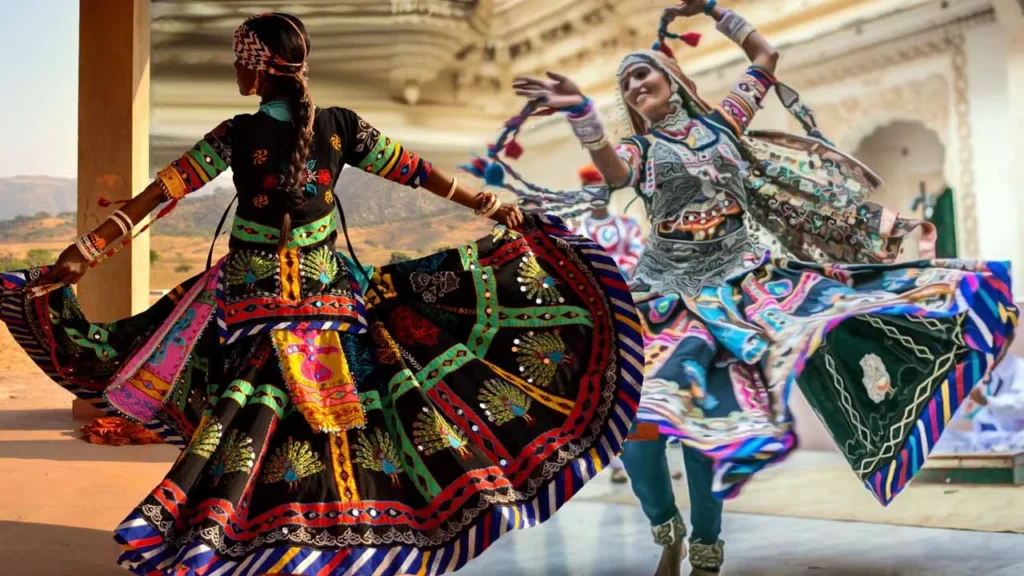
Rajasthani culture is famous for having a variety of folk dances that are attractive, vibrant, and a great form of entertainment. Some of these dance forms are even famous worldwide. Most of these folk dancers are highly skill and their moves cannot be perform by just anyone. Two of the most popular dances are Kalbeliya and Ghoomar.
Kalbeliya is a popular dance form from Rajasthan performed by the tribe of the same name. The Kalbeliya tribe is known for being snake charmers and catchers. This connection to snakes can be found in their dance form as well. The women dancers dress up in embellished and flowing black skirts and perform intricate steps and swirls which appear to be graceful replications of a snake’s movements.
Ghoomar is a traditional folk dance performed by Rajasthani women on special occasions and festivities. The dance form gets its name from the word ghoomna, the Hindi word for ‘spinning’. It involves graceful gyrating movements which allow the dancers’ heavy and elaborate traditional skirts to flare out and display their colourful and intricate designs.
Rajasthani Music
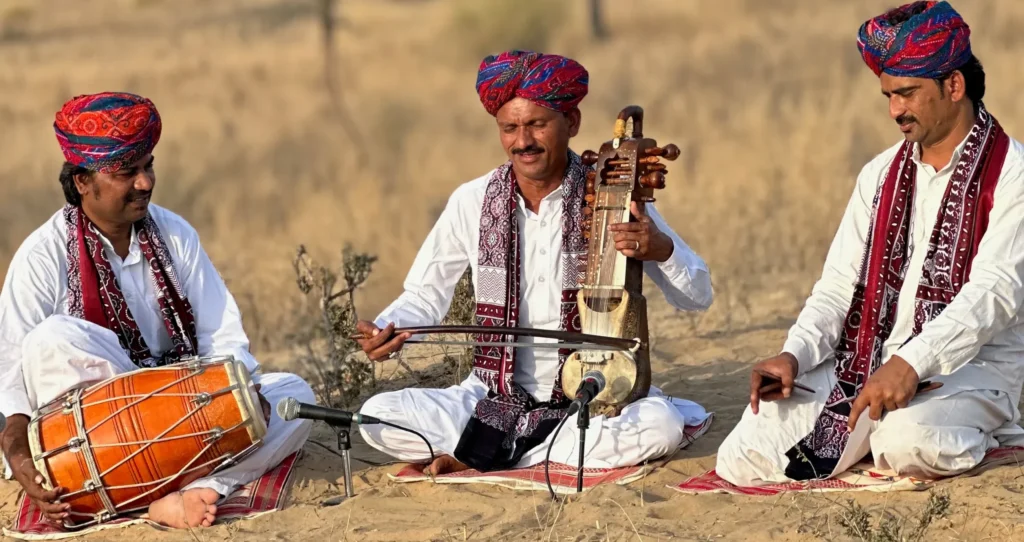
Music has been an indispensable part of Rajasthan culture. Since it’s been home to a lot of tribal communities, tribal and folk music have always played an important role in the state. There are two prominent groups that contribute to Rajasthan folk music— the Manganiyars and the Langas. Primarily Muslim communities, the Langas stuck to Muslim audiences and styles, while the Manganiyarsfollowed a more liberal approach to music. Folk songs or ragas are sung for different purposes. For instance, there are different songs for different seasons and a specific raga for ushering in the monsoons as well.
Rajasthani folk songs are mostly about heroic tales and love stories, while others are devotional in nature. The dholak, sarangi, sitar and other traditional instruments give the music a euphoric and ethnic touch.
Language
With Hindi as the most commonly spoken language, you can always find the mix of local essence among the Rajasthanis. Each of the region has its own dialect and; you may also find new words or linguistic scriptures as you move around the entire of the Desert Capital of India. Though language is a diverse aspect, you would always find all the forms and dialect equally soothing to your ears.
Rajasthani Attire
Attire is an important aspect of Rajasthani culture which reflects the opulent heritage of the Rajasthani people.
Traditional Attire For Rajasthani Women
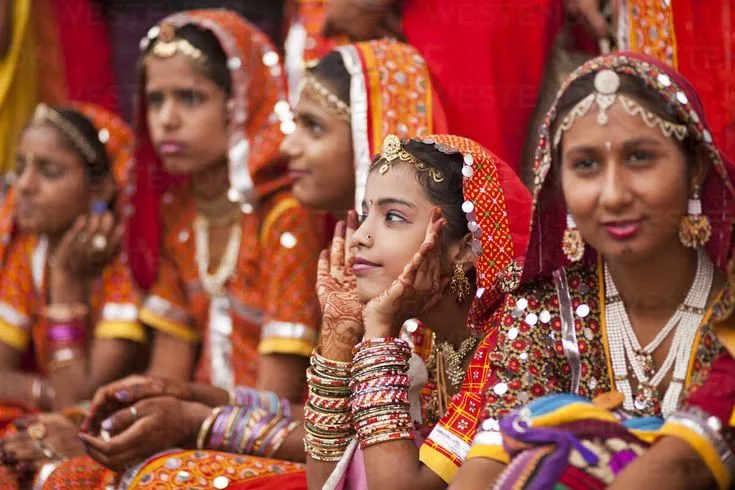
Women usually wear a ghagra, choli, and odhni. The ghagra is a full-length embroidered skirt that comes in a variety of colours, prints and fabrics. Leheria, bandhej, and chundhri are some of the most well-known ghagra prints. The choli is the blouse worn with the ghagra. It is often embellished with mirrorwork, sequins, shells, and beads. The whole outfit is complete with the odhni, a long piece of a cloth/scarf is used to cover the head as a veil. It’s beautifully embroidered with embellished borders; one of the most famous techniques being gota-patti (a type of embroidery which uses the applique technique with gold or silver ribbons). This type of embroidery originated in Rajasthan.
Traditional Attire For Rajasthani Men
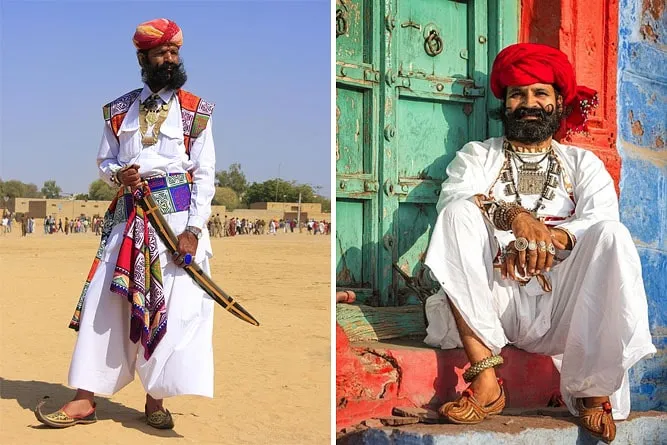
Men traditionally wear a dhoti and angarkha or kurta with pyjamas. The dhoti is a long piece of cloth tied around the waist and wrapped around the legs. The angarkha and kurta are upper-body wear. The angarkha was traditionally only worn by the elite class—the upper garment is characterised by an asymmetric opening which is knotted with thread ties. The kurta is a loose-fitted shirt and pyjamas are similar to loose track pants.
This traditional outfit remains incomplete without the pagdi (turban or headgear). It’s considered a symbol of pride and honour among Rajasthani men. It comes in a variety of shapes, sizes and colours. Some variants are meant for special occasions, while some are used for daily wear.
Food and Cuisine of Rajasthan
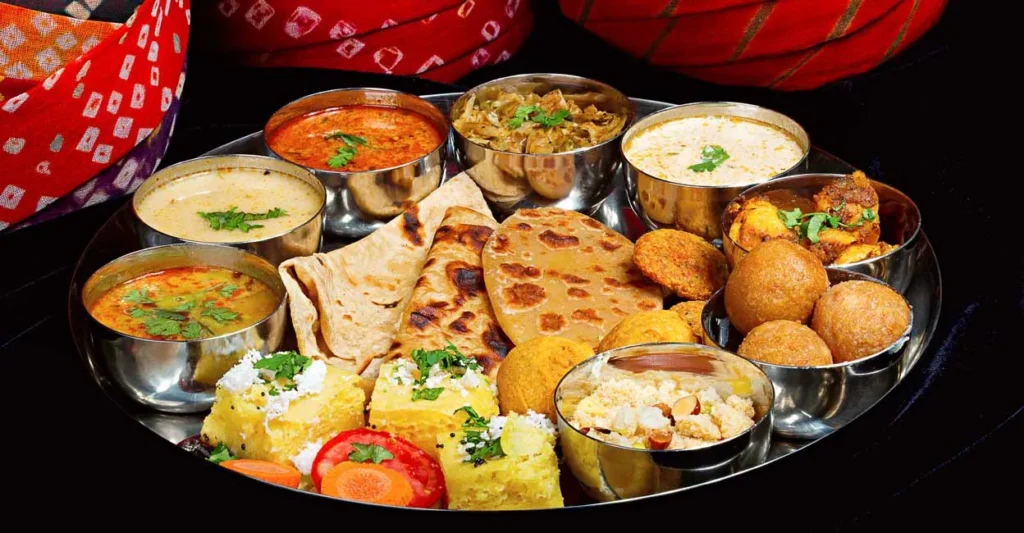
As a tourist, there are some foods that you need to try. Rajasthani food is known for its various spices and also its sweetness. Rajasthan is most famous for dalbati – A dish comprising of dal and wheat flour kneaded with yoghurt and dressed in ghee. It is also famous for kachori – the kachori in Rajasthan are of two types – sweet and spicy. The spicy kachori is called the pyaaz or onion kachori, and the sweet kachori called the mawa kachori. Both these kachoris are easily available in any food stalls in Rajasthan. Ghewar and gheriya are some delectable sweet dishes originating from Mewar, available in most restaurants at Rajasthan. Most of the Rajasthani dishes are made in ghee. More than 70% of people in Rajasthan are Lacto vegetarian making it one of the most vegetarian states in India. However, non-vegetarian dished like Lal Maas and Mohan Maas are delicacies in Rajasthani cuisine.
Architecture
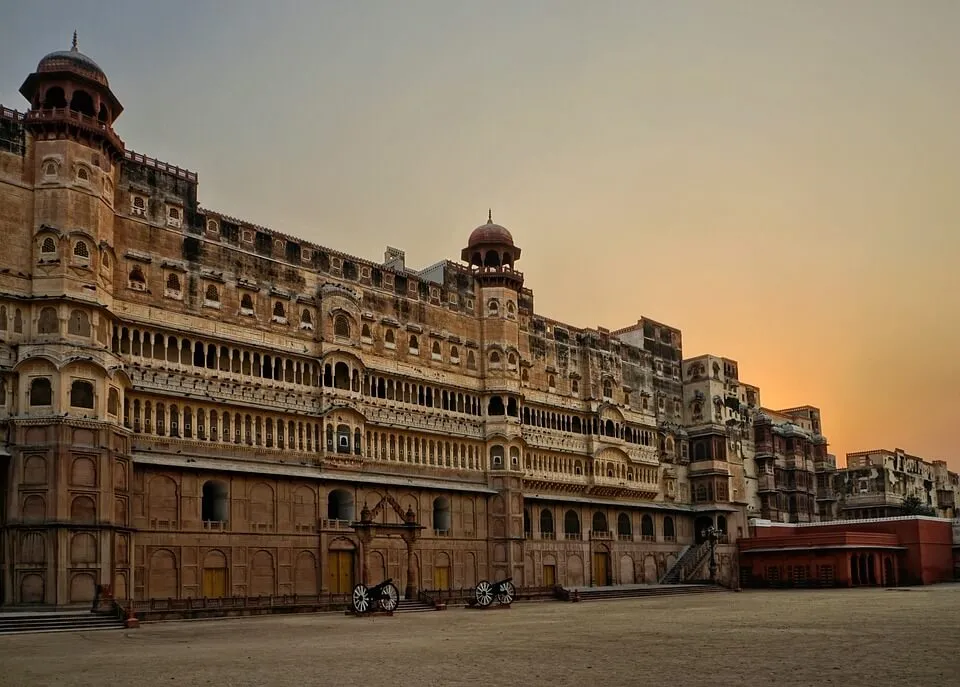
The architectural style in Rajasthan is as diverse as its people. You get to evidence some of the exemplary sites of Islamic, Hindu, colonial and even modern architecture. Rajasthan should be your next place to visit if you are a lover of architecture and appreciate monumental buildings, heritage sites and different styles of design. The Jain temple in Ranakpur was built in the 15th century. The style of architecture is M’ru-Gurjara Architecture (styles that include various structures and shapes). It is a western Indian architecture style with various domes and carvings on the pillars and the ceilings.
The Umaid Bhavan Palace in Jodhpur is an architecture of Beaux-Arts style along with a blend of eastern and western architectural styles in spite of being built by Maharaja Jai sign II, a Hindu ruler. Jaisalmer Fort and Golden Fort were built in 1156 AD by the Rajput ruler Rawal Jaisal. The fort contains several gates, Jain temples and Havelis and is included as a world heritage site by UNESCO. There are only a few examples of architectural sites that Rajasthan holds. Other sites include memorials, forts, heritage hotels, etc. The Pink City of Jaipur has been named the UNESCO World Heritage Site in 2019.
Must Read : Lord Shiva Avatars
Forts Of Rajasthan
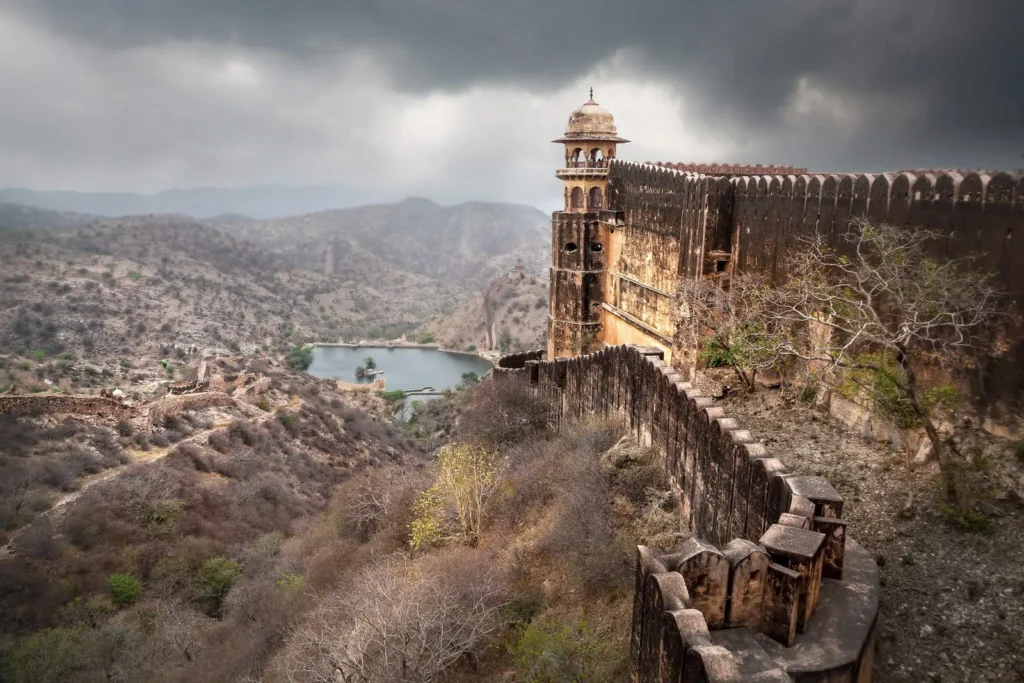
When one thinks of Rajasthan, it is impossible not to associate it with the magnificent forts that reside in the state. With over a hundred fortifications on hills, six hill forts of Rajasthan have been clustered and given the United Nations Educational Scientific and Cultural Organisation (UNESCO) World Heritage Site status. The Six Hill Forts of Rajasthan are Chittor Fort at Chittorgarh, Kumbhalgarh Fort at Kumbhalgarh, Ranthambore Fort at Sawai Madhopur, Gagron Fort at Jhalawar, Amer Fort at Jaipur, Jaisalmer Fort at Jaisalmer.
Religions
There are numerous religious sites worth visiting in Rajasthan. Exploring them also provides insight into the state’s elaborate history and culture, local customs, beliefs, and traditions.
Brahma Mandir In Pushkar
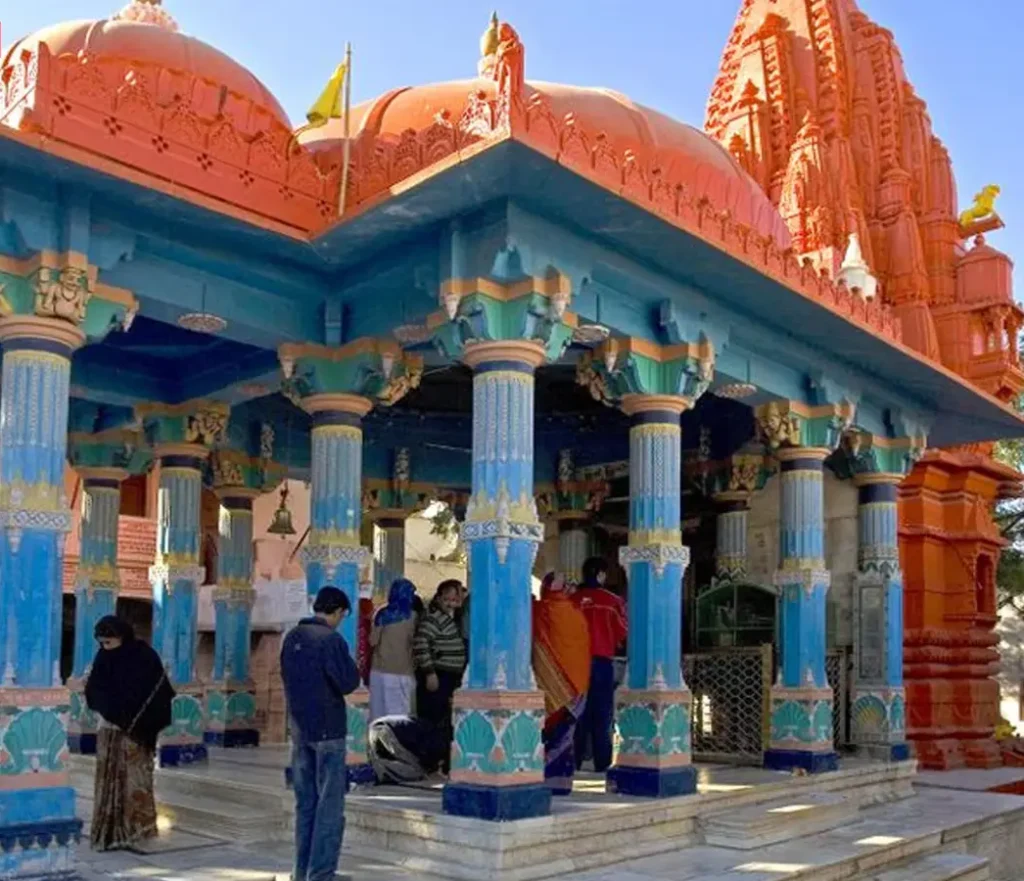
Pushkar in Rajasthan has the only temple in India that is dedicated to lord Brahma. Although there are smaller temples dedicated to Brahma now, the one in Pushkar is the earliest and most prominent one. The story behind it tells us that when Brahma came down to earth, he named the place where the flower (“pushpa”) fell from his hand (“kar”)— leading to the name Pushkar. So, the people of Pushkar erected a temple to honour him. The temple is situated next to Pushkar Lake, considered to be a holy spot. It’s supposedly 2000 years old and attracts devotees from all over the country. They take a dip in the lake and offer prayers to lord Brahma at the temple.
Karni Mata Mandir In Deshnoke
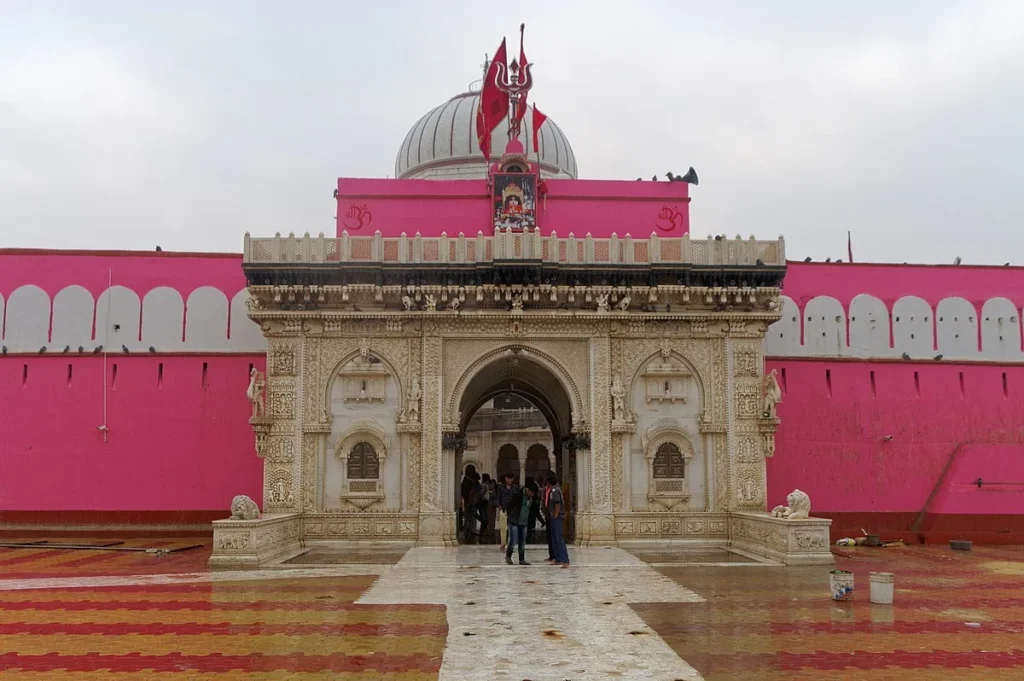
Dedicated to Karni Mata, this temple is located in Deshnoke, which is nearly 30 km from Bikaner. It is one of the most unique religious sites in India as there are nearly 20,000 rats living in this temple. The rats are call kabbas and are worshipp by the devotees. The offerings made here are eaten by the rats and then given back as prasadam (blessed offering).
The legend goes that the temple was built in the 1400s and the goddess worshipp here, Karni Mata, is an incarnation of the goddess Durga. People believe that Karni Mata had asked Yama, the god of death, to reincarnate the son of a storyteller. When Yama refused, the goddess promised all the male storytellers that the members of their caste will all be reincarnated as rats in her temple.
Rajasthani Art And Paintings
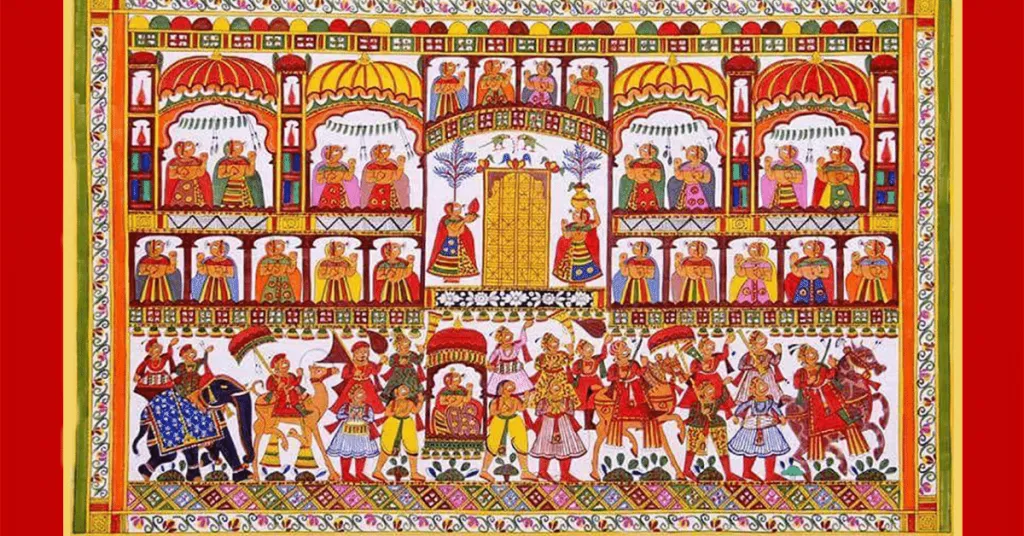
Rajasthan boasts a rich heritage of art and culture. The Rajput clan particularly has made hefty contributions to Rajasthani art and culture. Rajput paintings flourished in the 17th and 18th centuries when artists would paint elaborate scenes from the Hindu epics Ramayana and Mahabharata.
Rajasthani paintings were mainly meant to be kept in boxes or albums. Displaying the paintings was not a very common practice and hence, miniatures were the most preferred medium. However, paintings were also done inside the walls of the palaces, various havelis and other places of importance.
Gemstone paintings are very famous in Rajasthan. Originating in the Pink City, Jaipur, gemstone painting is created using semi-precious and precious stones like emeralds, rubies, and sapphires of different colours. The gemstones are ground to fine dust and then stuck to the sheet with the help of a pinhead point. This painting is entirely made by hand and hence, the artist’s skill and imagination are what bring out the vibrancy in these paintings. Since they’re made with all-natural stones, these paintings never fade and lose colour.
Also Read : The Rich Cultural Heritage of Traditional Dress of Tamil Nadu
A Colour Coordinated State
Rajasthan is known for having beautifully colour-coordinated cities. No wonder it’s considered as one of the most vibrant colourful states of India. And each colour-coordinated city has a small piece of fascinating history attached to it:
Jaipur – The Pink City
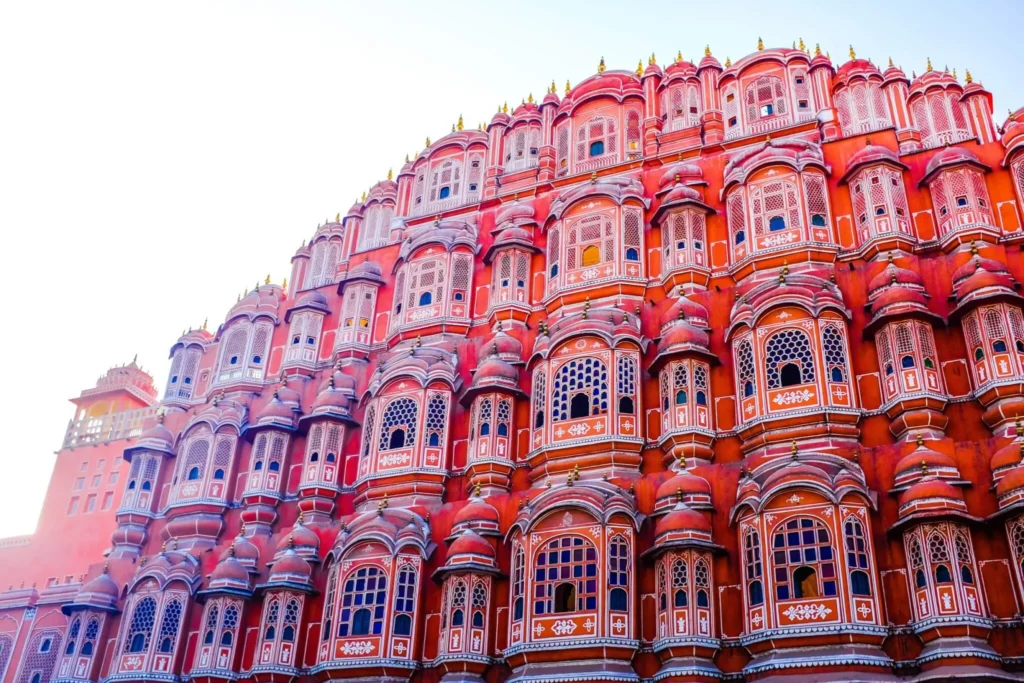
Jaipur is famously known as the Pink City worldwide. In 1876, the city was paint terracotta pink to welcome the Prince of Wales and Queen Victoria. Subsequently, the ruler pass a law stating that all the buildings and houses in the city must be painted pink, which is still follow.
Jodhpur – The Blue City
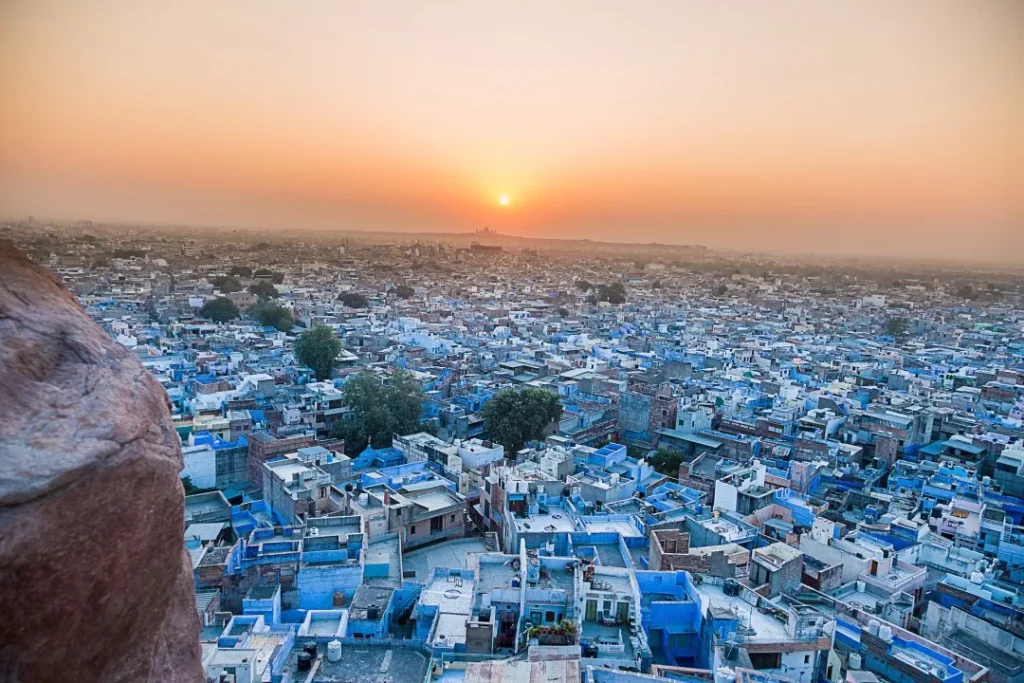
The city is fill with beautiful blue-hued houses that remind one of the sea. Initially, it was a trend start by the elite class of Jodhpur. However, now it is a common trend follow by all. It is also said that painting the house blue work as an insect repellent.
Udaipur – The White City
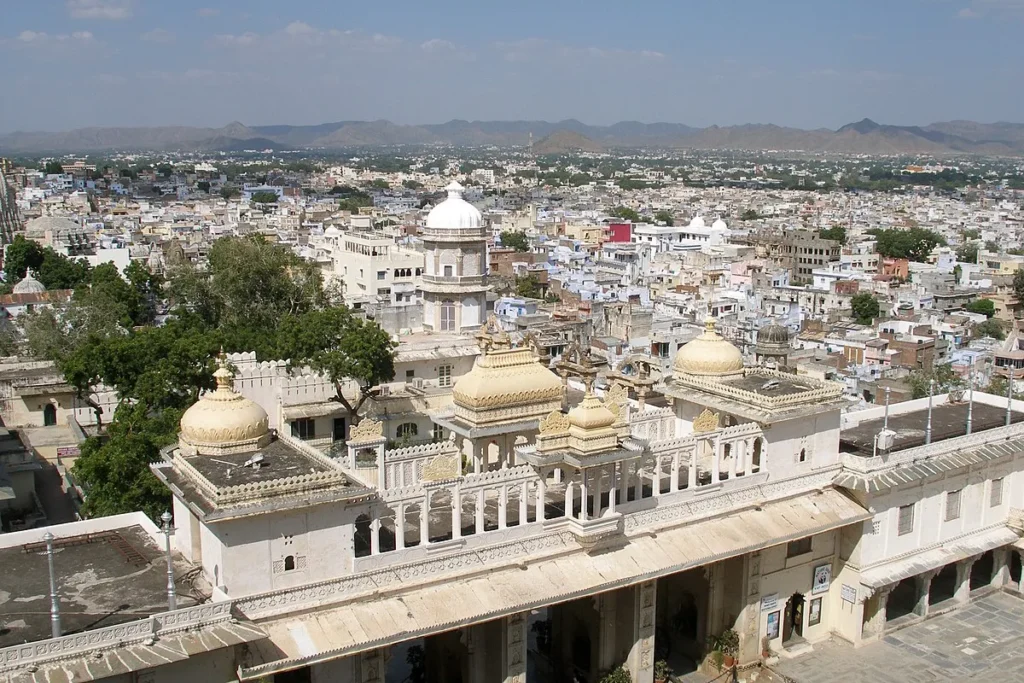
The first thing you notice in Udaipur is the plethora of beautiful lakes. The city is also full of pristine white buildings that reflect on the lakes’ surfaces beautifully. Back in the day, kings would build their palaces with white marble and so, most of the prime buildings in Udaipur are white.
Rajasthani Handicrafts
Rajasthan is a treasure trove for people who love handicrafts. They are one of the most famous attractions of the state and an accurate reflection of the state’s rich cultural heritage. Rajasthani handicrafts are know for their exuberance of colour and culture. They also provide a wide variety of choices for taking back as souvenirs. While there is a plethora of handicrafts that Rajasthan offers, some are especially know as being quintessentially Rajasthan and are popular not just in India, but around the world as well –
Textile And Fabrics Of Rajasthan
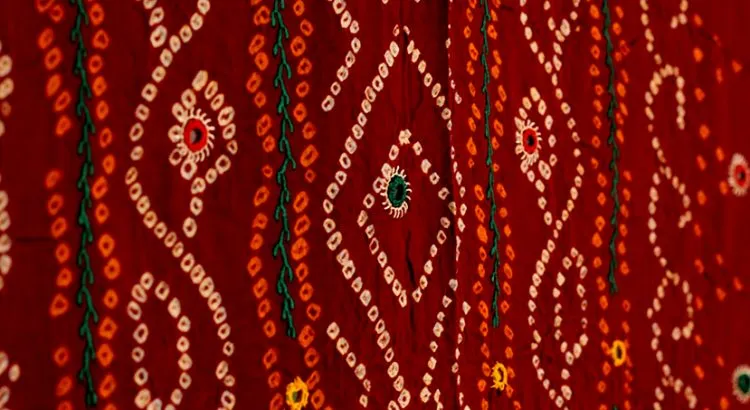
Textiles are intrinsically connect to Rajasthani culture. Colours in unique hues and prints make up the fabrics from Rajasthan. These include different forms of block printing and tie and dye methods. Each place has its own distinct style and design—Sanganeri print Sanganer has bright colours in floral patterns. Jodhpur and Sikar are famous for their tie and dye techniques. Popular amongst the plethora of beautiful designs are—chunari (dotted), leheriya (wave-like diagonal patterns), and mothra (large dots). Bikaner and Jhunjhunu are popularly know for intricate mirror work and other appliqué use to embellish the fabric for Rajasthan’s traditional dresses.
Puppets
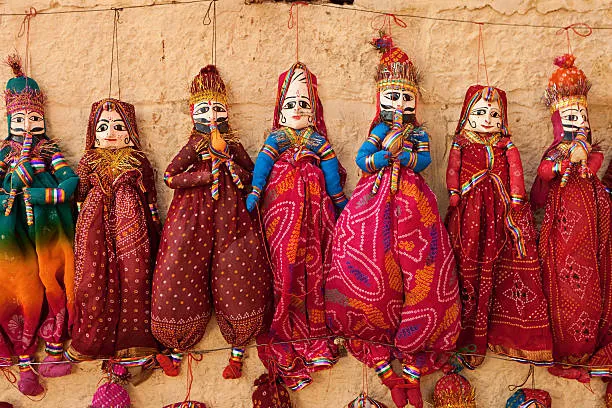
Puppets, also known as kathputli, with wooden heads and stuffed bodies, are iconic to the culture of Rajasthan. They are paint with arch eyebrows and moustaches for males while colourful faces with nose rings and large expressive eyes are paint on female puppets. The puppets are dress in bright and vividly coloured clothes which are usually embellish with dazzling sequins. A popular form of entertainment in Rajasthan is the kathputli show where expert puppeteers put up a show with the puppets dancing to live music.
Pottery
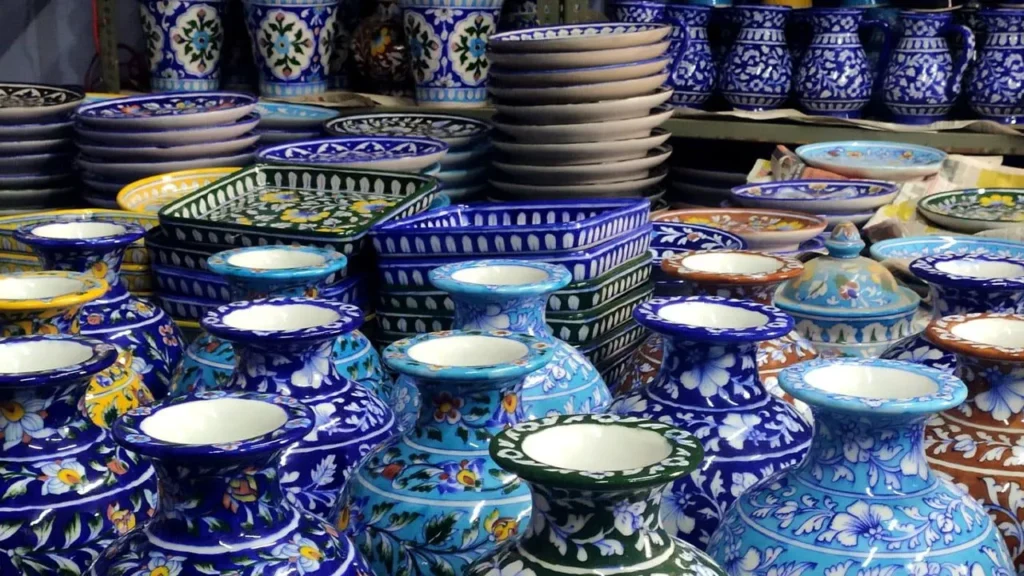
The blue pottery of Jaipur is quite famous for reflecting the state’s culture and heritage. It’s made out of ground quartz stone. The designs on the pottery are usually exquisite floral designs or animal prints.
It is a Persian art form which was first introduced in the state by Maharaja Ram Singh.
Jewellery
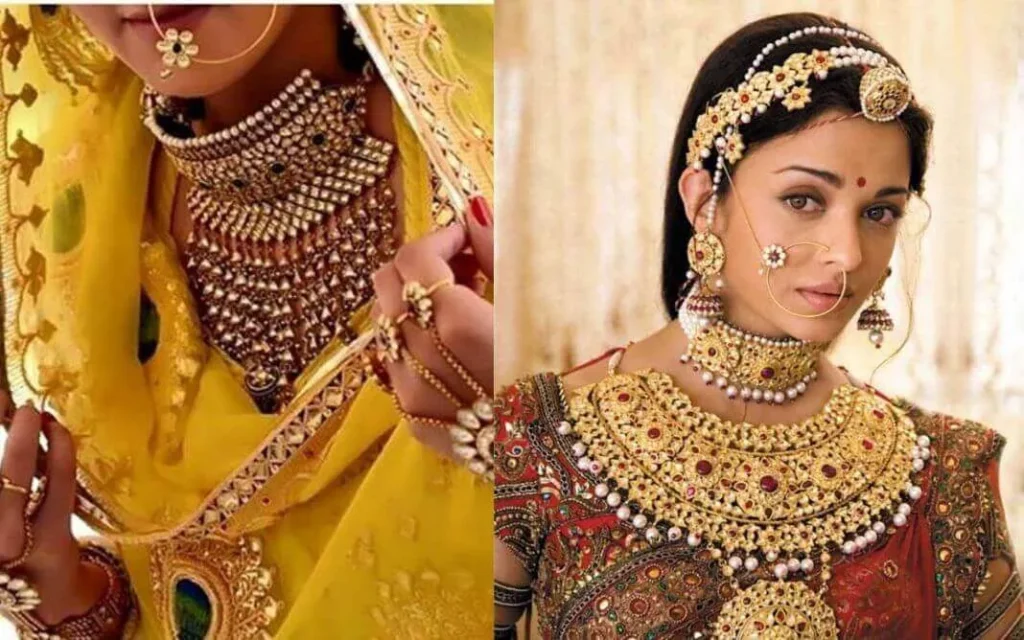
Rajasthani people are fond of adorning their attire with beautiful gems and so, Rajasthani culture includes beautiful jewellery as well. Each region of the state has its own style of jewellery. Jaipur is popular for gem cutting, silver ornaments, and coloured glass stones. The thewa pendants are made of inlaying gold with semi-precious stone and are famous worldwide. Bikaner is famous for kundan work, a traditional form of Indian gemstone jewellery which involves setting a gold foil between stones. This is usually done for elaborate necklaces.
Also Read : Shivam Dube IPL 2024 Price Revealed!
Festivals Of Rajasthan
You cannot speak about Rajasthani culture without speaking of Rajasthan’s joyous and colourful festivals. They are as popular as their art, handicrafts, and architecture and are celebrat in full swing every year. Some are of religious importance, others celebrate ethnicity, some display the state and its heritage, and some are solely cultural events.
Teej
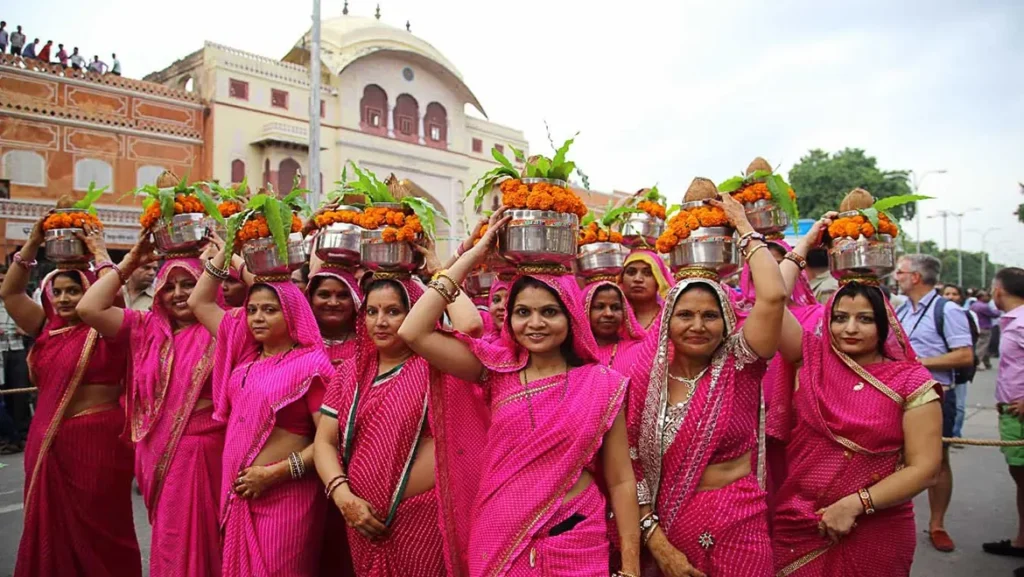
Teej is one of the most popular festivals of Rajasthan and is celebrat with grandeur, complete with traditional songs and dances. The festival is dedicat to the goddess Teej and her gold palanquin is take across. The city with decorat elephants, horses, and camels in a grand procession. The sweet dish ghewar is a special delicacy prepar especially for this festival.
Pushkar Camel Fair
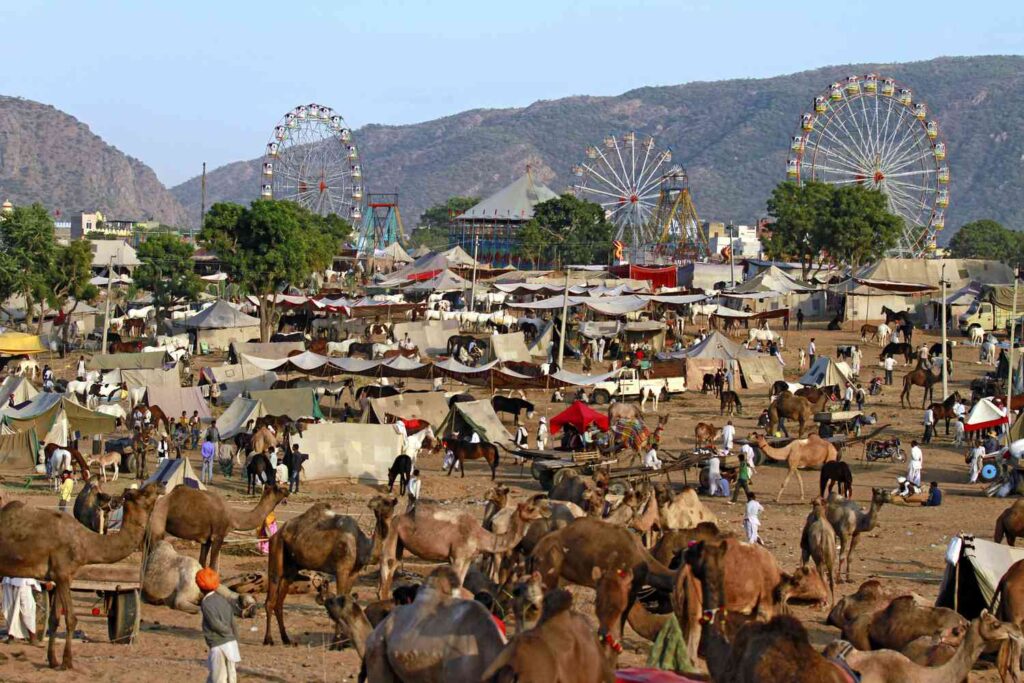
The Pushkar Camel Fair is a traditional festival where thousands of camels are gather for trade. The festival is one of its kind and is celebrat with music, dance, magic shows, acrobats, snake charmers, and carousel rides—a full-blown carnival amid majestic sand dunes. The key attractions include parades and beauty contests of camels which are decorat with various embellishments, hot-air balloon rides, moustache competitions among men with elaborately decorated moustaches, and a handicraft bazaar.
Mewar Festival

The Mewar Festival is celebrat to usher in spring and is celebrat in Udaipur with much pomp and show. It’s the world’s second Living Heritage Festival and one of the most popular fairs in Rajasthan. It is celebrat with folk music, dance, and food. Seminars on the preservation of city monuments are a key feature, along with musical shows, classical dance performances, food stalls hosted by professional chefs, and a magnificent display of fireworks.

